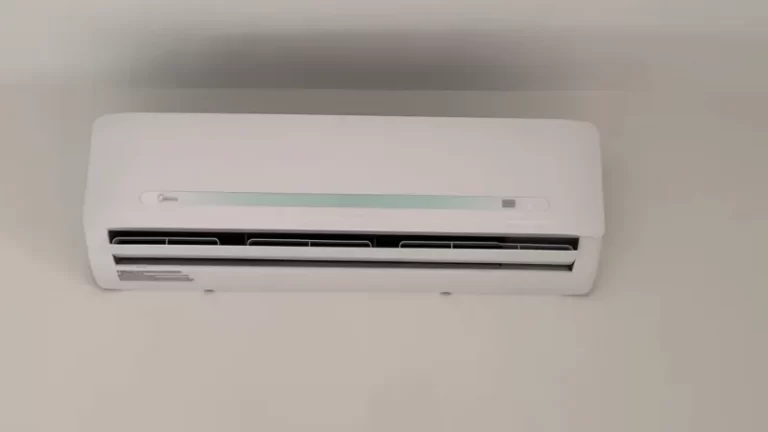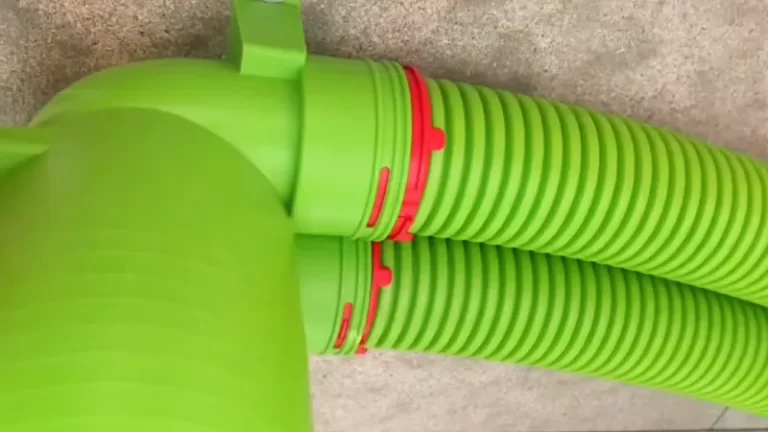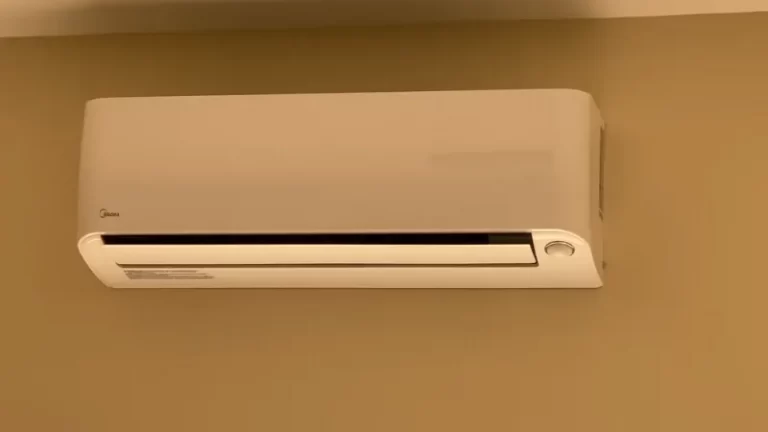How to Cap Off An Air Duct for Maximum HVAC Efficiency?
Are you renovating your home, removing a room, or simply trying to optimize your heating and cooling? You might have an air duct that now leads to nowhere. This isn’t just an eyesore hidden in your walls; it’s an open wound in your HVAC system, silently leaking your hard-earned money into the attic or crawlspace.
An unused and unsealed air duct can lead to significant energy loss, poor air quality, and even create a welcome mat for pests. Sealing it off isn’t just a good idea—it’s essential for maintaining an efficient and healthy home. This guide will walk you through everything you need to know, from why it’s a problem to the step-by-step process of capping it like a pro.
You'll Learn About
The Hidden Problems of an Uncapped Air Duct
Many homeowners underestimate the impact of a single open duct. Your HVAC system is a pressurized loop, carefully designed to distribute conditioned air evenly throughout your home. Leaving a duct open disrupts this balance, creating a host of issues that can affect both your comfort and your wallet.
Think of it like trying to fill a bucket with a hole in it. No matter how much water you pour in, you’ll constantly be losing some. An uncapped duct is a major leak in your system, forcing your furnace or air conditioner to work harder and longer to maintain the desired temperature, driving up your utility bills.
Why You Can’t Just Close the Vent
Simply closing the louvers on a wall, floor, or ceiling register is not a permanent solution. While it might stop the most obvious airflow, these vents are not designed to be airtight. Air will still escape, and you’ll continue to lose conditioned air and energy.
Furthermore, closing off too many vents can create excessive pressure within your ductwork. This strain can damage your HVAC system’s blower motor, lead to new leaks in other parts of the ductwork, and even cause dangerous issues like a cracked heat exchanger in your furnace.
Energy Loss and Skyrocketing Bills
The most immediate consequence of an open duct is wasted energy. A typical home can lose 20 to 30 percent of conditioned air through leaks, holes, and poorly connected ducts. An entirely uncapped duct significantly contributes to this loss, forcing your system to run excessively to compensate.
This inefficiency is directly reflected in your monthly energy bills. Properly sealing unused ducts is one of the most effective ways to reduce energy consumption and save money year-round.
Poor Indoor Air Quality and Pest Invasions
An open duct doesn’t just let air out; it can also pull unfiltered air in. Ducts are often located in attics, basements, and crawlspaces—areas prone to dust, mold, insulation fibers, and other contaminants. These pollutants can be drawn into your HVAC system and circulated throughout your home, degrading your indoor air quality.
Worse yet, an open duct provides an easy entry point for insects, rodents, and other pests. Once inside your ductwork, they can build nests, cause damage, and spread allergens and diseases throughout your living spaces.
Your Step-by-Step Guide to Capping an Air Duct
Ready to tackle the problem? Capping an air duct is a manageable DIY project for most homeowners. The process varies slightly depending on whether you have rigid metal ductwork or flexible ducts, but the core principles remain the same: create a secure, airtight seal.
Gathering Your Tools and Materials
Before you start, you’ll need to collect a few essential items. Having everything on hand will make the job smoother and ensure you create a durable, long-lasting seal. Here’s what you’ll typically need:
- Duct End Cap: A galvanized steel cap matching the shape (round or rectangular) and diameter of your duct.
- Sheet Metal Screws: To securely fasten the end cap to metal ducts.
- Mastic Sealant: A gooey, paint-on sealant that creates a permanent, flexible, and airtight seal. This is far superior to tape.
- Foil Tape (UL 181-rated): Do not use standard cloth-backed duct tape, which degrades quickly. HVAC-grade foil tape is essential for sealing seams.
- Safety Gear: Gloves, safety glasses, and a dust mask are crucial, especially when working in dusty attics or crawlspaces.
- Drill or Screwdriver: For driving in the sheet metal screws.
- Cleaning Supplies: Rags and a household cleaner to wipe down the duct surface before sealing.
How to Cap Off a Rigid Metal Duct
Rigid ductwork, typically made of galvanized steel, is common in many homes. Capping these ducts is straightforward and creates a very robust seal.
Step 1: Measure Your Duct
First, measure the diameter of your round duct or the height and width of your rectangular duct. Purchase a corresponding metal end cap from a home improvement store. Getting the right size is critical for a snug fit.
Step 2: Attach the End Cap
Fit the end cap over the end of the duct. It should be snug. Secure it in place by driving at least three self-tapping sheet metal screws through the side of the cap and into the duct.

Step 3: Seal the Seam with Mastic
This is the most important step for ensuring an airtight seal. Using a disposable paintbrush, apply a generous layer of mastic sealant over the seam where the end cap meets the duct. Spread it thickly, ensuring the entire circumference is covered without any gaps.
Step 4: Insulate the Capped End (Optional but Recommended)
If the duct is in an unconditioned space like an attic, wrap the newly capped end with duct insulation. This prevents condensation from forming on the cold metal surface during the summer, which could lead to moisture issues. After considering the insulation, you might want to look into improving your home’s overall thermal barrier; proper r80-insulation can make a significant difference in energy efficiency.
How to Cap Off a Flexible Duct
Flexible ducts are made of a wire coil covered in plastic and insulation. Capping them requires a slightly different approach, as you cannot simply screw a metal cap on.
Step 1: Expose the Inner Liner
Cut the outer insulation and plastic vapor barrier back a few inches to expose the inner plastic liner of the flex duct. Be careful not to puncture the inner liner.
Step 2: Cinch and Seal the Inner Liner
The best method is to use a cable tie (zip tie) to tightly cinch the inner liner shut. Pull it as tight as you can. For extra security, you can fold the liner back on itself and use a second zip tie.
Step 3: Apply Mastic Sealant
Liberally apply mastic sealant over the cinched and folded end of the inner liner. This creates the primary airtight seal, so don’t be shy with the application.
Step 4: Seal the Outer Layers
Pull the insulation and the outer plastic jacket back over the sealed inner liner. Use foil tape to securely seal the outer jacket shut, ensuring no insulation is exposed.
Comparing Duct Capping Methods
Choosing the right method depends on your duct type and desired permanence. While a quick fix might seem appealing, a proper seal is crucial for long-term efficiency.
| Method | Materials | Difficulty | Best For |
|---|---|---|---|
| Metal End Cap & Mastic | Galvanized Cap, Screws, Mastic | Easy | Permanent sealing of rigid metal ducts. The most reliable method. |
| Flex Duct Cinch & Seal | Zip Ties, Mastic, Foil Tape | Moderate | Permanently sealing flexible ducts. Requires careful sealing of multiple layers. |
| Register Block Off | Foam Board, Caulk | Easy | Temporary solution at the vent opening. Not fully airtight and not recommended for the long term. |
| Foil Tape Only | UL 181-rated Foil Tape | Easy | Not recommended as a standalone solution. Tape will eventually fail. Use only with mastic. |
Common Mistakes to Avoid
Capping a duct might seem simple, but a few common errors can compromise your efforts. Avoiding these pitfalls will ensure your fix is effective and permanent.
Using the Wrong Tape
The single biggest mistake is using standard cloth-backed duct tape. Despite its name, it is not suitable for ductwork. The adhesive dries out and fails under the temperature fluctuations common in HVAC systems. Always use mastic sealant or, at a minimum, UL 181-rated aluminum foil tape for any sealing.
Capping at the Register Instead of the Trunk
While easier, sealing only at the wall or floor register leaves a long, unused “dead” branch of ductwork. This section can still be a source of minor air leaks and become a place for dust and mold to accumulate. The best practice is to trace the duct back to where it connects to the main trunk line and seal it off there.
Ignoring System Balance
Your HVAC system was sized for a specific amount of airflow and square footage. If you are capping off a significant number of ducts, it could negatively impact the system’s static pressure. While sealing one or two unused vents is generally fine, a major change may require consulting an HVAC professional to ensure your system continues to operate safely and efficiently. If you’re undertaking major energy-efficiency projects, like switching from propane to electric water heater, it’s a good time to have a professional assess your entire HVAC setup.
Forgetting About Insulation
In unconditioned spaces, a metal duct cap can become a cold surface where condensation forms, especially in humid climates. This moisture can lead to rust or mold growth. Insulating the capped end is a simple step that prevents future problems. In some cases, you may wonder, can you walk on rigid foam insulation? It’s always best to check manufacturer guidelines to avoid damaging your insulation materials during any home improvement project.
When to Call a Professional
While capping an easily accessible duct is a great DIY project, some situations are best left to the experts. If the duct is in a hard-to-reach or unsafe location, or if your ductwork is a non-standard size requiring a custom-fabricated cap, an HVAC technician has the tools and expertise to do the job correctly.
Ultimately, taking the time to properly cap off an unused air duct is a small investment that pays off in lower energy bills, improved comfort, and better indoor air quality. Don’t let that open duct keep costing you money—seal it up and enjoy a more efficient home.



